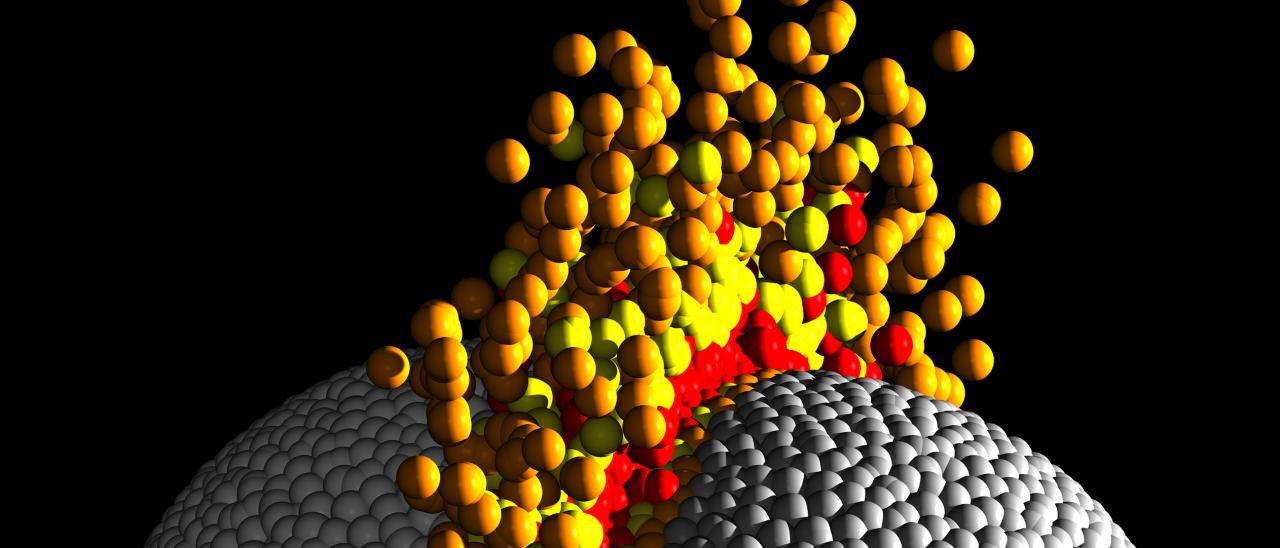Recently, astrophysicists have studied the configuration of a planetary system (Kepler 107) discovered with the NASA Kepler mission, which was looking for exoplanets outside our Solar System. The planetary system Kepler 107 is constituted of a star similar to the Sun though slightly more massive and four planets orbiting around it. The detailed analysis of the configuration of the planets, in particular their densities, showed that the closest planet is not the densest, which is what is expected from the planet formation theory. Using some simulations, one of the most plausible explanation of the existence of such system is that the two planets closest to the star result from a collision that created these two planets, similar to how our Moon was formed. This is the first time that the result of such an impact has been observed in an exoplanetary system
The figure shows one frame from the middle of a hydrodynamical simulation of a high-speed head-on collision between two 10 Earth-mass planets. The temperature range of the material is represented by four colours grey, orange, yellow and red, where grey is
Advertised on
Authors
A. Bonomo
Savita
Mathur
References
2019 Nature Astronomy 3 416



